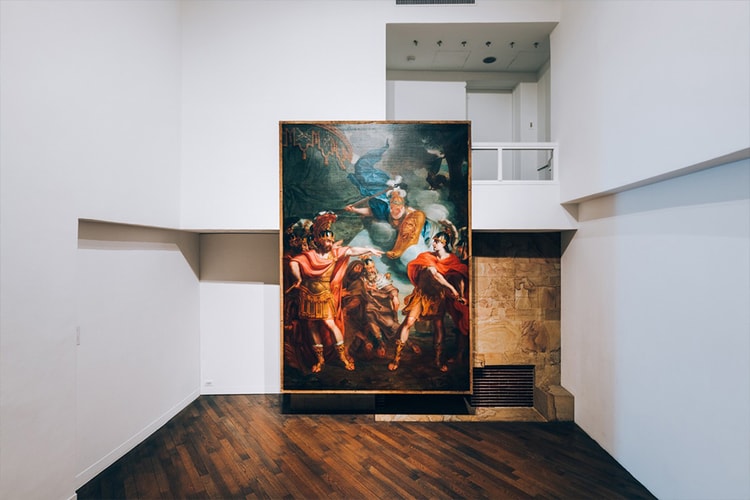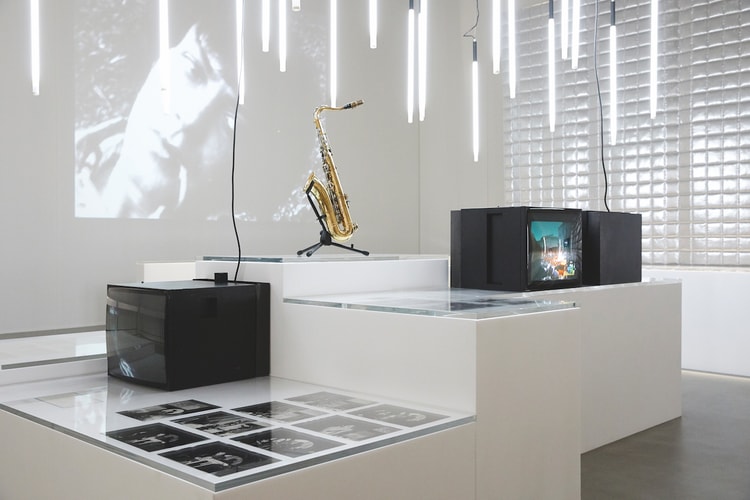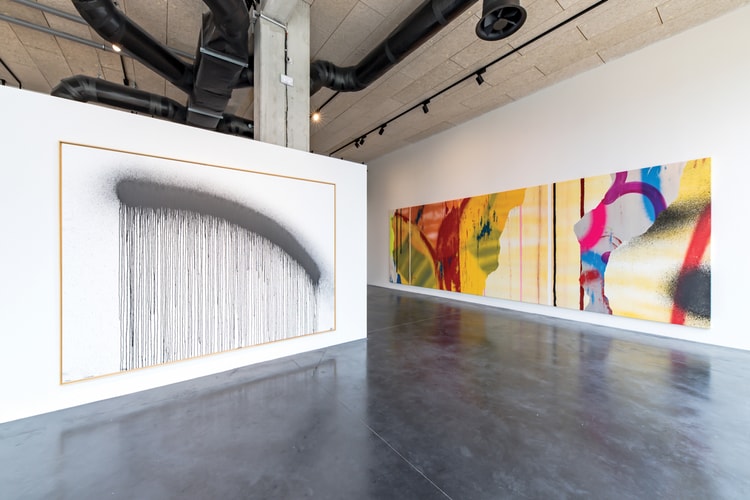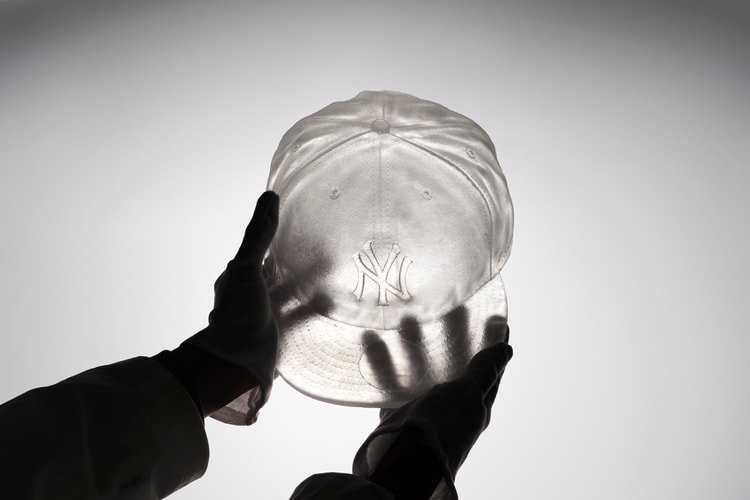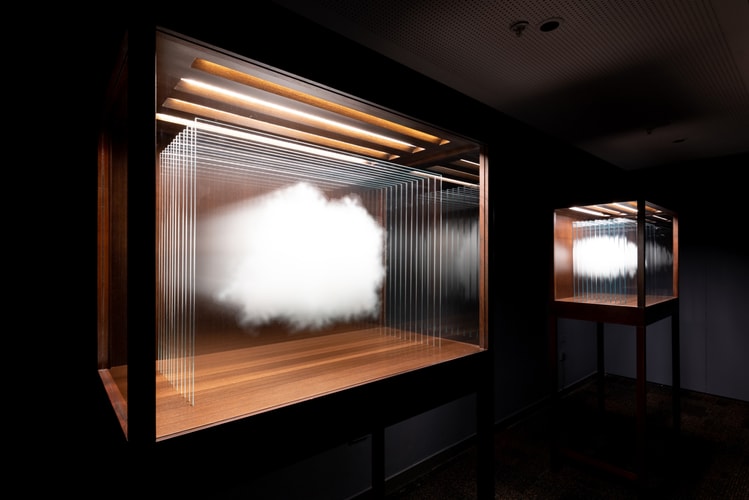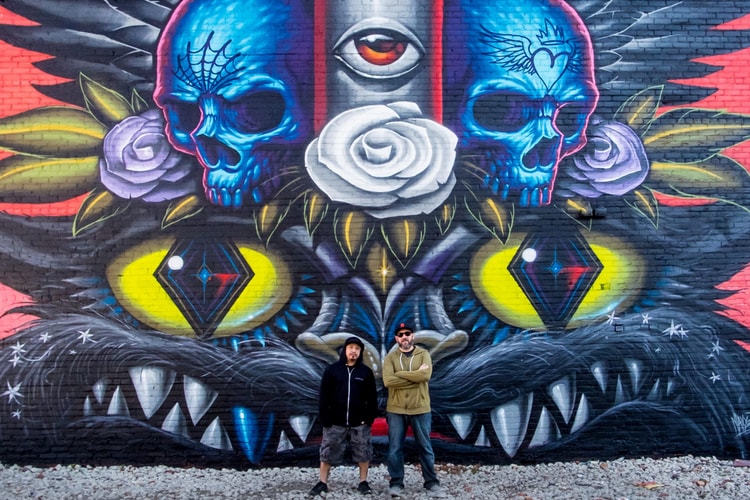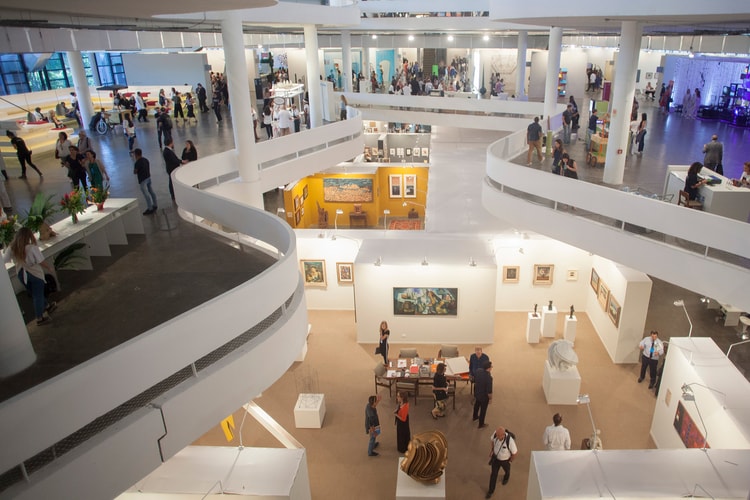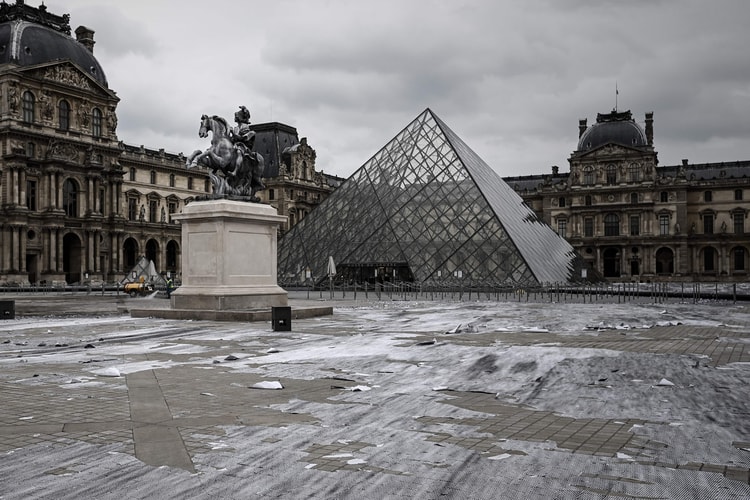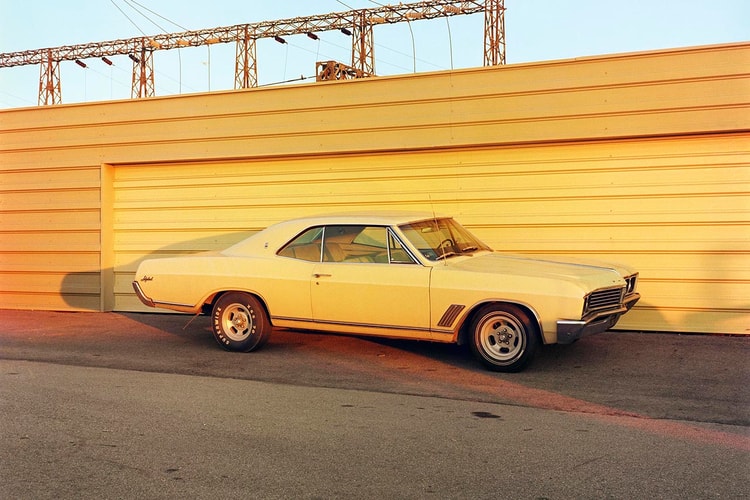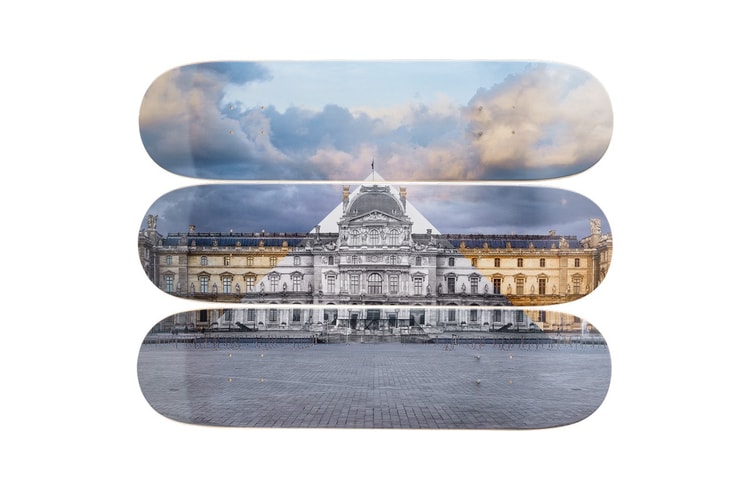Latin American Artists Speak On Misconceptions About the Region
An interview with four artists from SP-Arte’s SOLO sector.
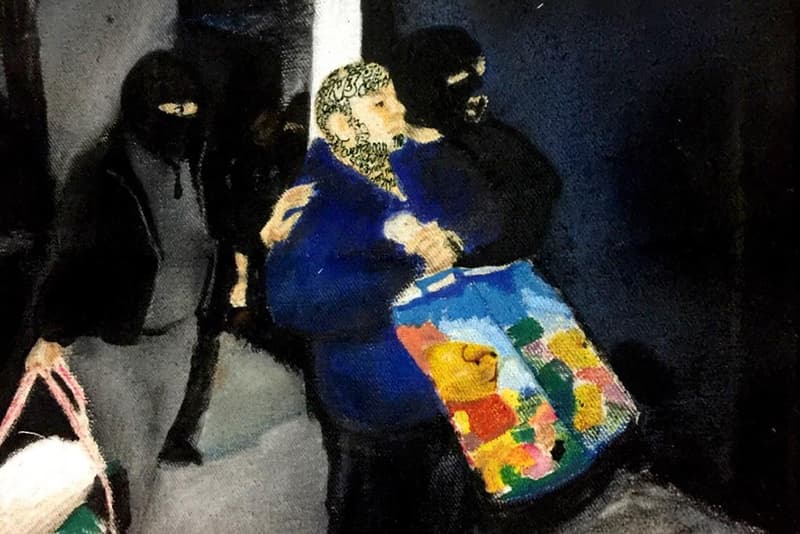
The 15th edition of the São Paulo International Art Festival (SP-Arte) opened this week, with galleries from around the world arriving in the Brazilian city. Previously, we interviewed Chilean curator Alexia Tala about her process of creating this year’s SOLO sector, which aims to explore Latin America’s multiple identities. Today, we’re profiling four of the artists featured in 2019’s SOLO exhibition.
Brazilian artist and curator Aryson Heráclito works in a range of mediums, including photography, installations, performance and photography. His work is centered on Afro-Brazilian culture, often with references to colonialism. Sandra Vásquez de la Horra hails from Chile and works primarily with graphite and watercolor on paper, often turning her dream-like drawings into 3D paper sculptures as well. Peruvian artist Nicole Franchy works with collages and archives to develop new and imagined worlds, and her art has been shown in cities such as Bogotá, Toronto and Barcelona. Jorge de León is a visual and performance artist based in his native Guatemala City. His work centers on daily life in Guatemala, confronting themes such as commercialism and violence.
Read on for our interviews with each of the artists, and head to SP-Arte’s website to learn more about the fair, which closes this Sunday.
Ayrson Heráclito
Born: Macaúbas, Brazil
Based in: Cachoeira, Brazil
Gallery: Portas Vilaseca Galeria, Rio de Janeiro
This exhibition aims to challenge European expectations of Latin America. What do you feel are the most common misconceptions that Europe has about Latin America?
The contemporary art and culture of Latin America is still very unknown by its “colonizers.” With rare exceptions, there is a huge lack of understanding. One of the great misconceptions of the European expectation is to not consider the importance of the pre-colonial cultures, the great civilizations that existed in the region before facing the harmful colonial action. We have been very exploited by Europe, and the vast majority of our social inequality, and poverty came as a consequence of that relation. For many Europeans, we still are the “new world.”
How do you think the state of Bahia specifically, and Afro-Brazilian culture more broadly, fits into outsiders’ perceptions of Brazil?
The first capital of Brazil was the city of Salvador, Bahia. It is very closely linked as a whole with the colonial agency. Here is the harbour where the African human beings subjugated by slavery first arrived. Here was where a system of exploitation and domination of people worked. Our past is heavy and deep. A great amount of pain and suffering from Africans and indigenous people have shaped our history. The state of Bahia, as well as many other places in Latin America, is undergoing modernization, partially motivated by global dynamics. Otherwise, many people outside Brazil think that the state of Bahia is frozen in time. The result of this is a kind of reduction of the cultural complexity we have here, reinforcing stereotypes. We must recognize that something special was born here, which is the convergence of so many different cultures, such African, American, and European. It could be named “Black Rome.”
Do you think within Brazil itself, the identity of Bahia is misunderstood? Are there any parallels between how Europeans perceive Latin America, and how white, southern Brazilians perceive Bahia?
Salvador has the biggest black population outside of Africa, thus it is the African capital of the Americas. The musician Gilberto Gil, when referring to black Bahian culture, said: “Bahia civilizes Brazil.” It such a hard thing to be accepted by the white Brazilian elite: How are Africa and its diaspora able to civilize anything? The prejudice against non-Western-European culture is acceptable for many Brazilians. As a result, we have different geopolitical views in Brazil. The map of the political step backward of the last elections in Brazil reveals that the state of Bahia, and other states in the North and Northeast regions, think totally differently than the majority of the South and Southeast.
Your art has been shown in museums and galleries throughout Brazil and across Europe. How do you feel your art is received in Europe?
In Europe, my work is related with strategies of cures of places which have colonial archives, such anthropological and ethnological museums. With the development of post-colonial studies, I see a great crisis around those social sciences. The archives were formed in contexts of high levels of violence and domination. I have been invited to clean, in a spiritual approach, those museums. I am a kind of exorcist artist of this colonial evil. In Europe I am seen as an artist of the African diaspora in the Americas and Brazil. An artist from the estate of Bahia, who is also a member of the Afro-Brazilian religion of Candomblé, and who engages and affirms the Afro-Brazilian culture, the anti-racist fight.
Your recent exhibition at MASP, “Histórias Afro-Atlânticas,” gained international acclaim. Do you feel there are any similarities between that exhibition’s exploration of the connections between Africa, the Americas, and Europe and this year’s SOLO?
I took part in the curatorship of “Histórias Afro-Atlânticas” with the aim to make a statement that there are other routes of influence in the stylistic background of Brazilian art, beside the modern and European avant-gardes. This was an exercise to connect Latin America to Africa in an incessant flux and reflux within the Atlantic Ocean. This recognizes an artistic production outside the reductionist niches called “primitive art,” which put black and socially dispossessed artists to a place of small visibility and articulation within the art system. There is still much to be done, but I see more openness to exhibitions like that, and more and more there is the participation of black curators and artists in the international core and leadership.
Sandra Vásquez de la Horra
Born: Viña del Mar, Chile
Based in: Berlin, Germany
Gallery: Bendana Pinel Art Contemporain, Paris
This exhibition aims to challenge foreign, specifically European, expectations of Latin America. What do you feel are the most common misconceptions that Europe has about Latin America? Or about Chile specifically?
The most common misconception is that most Latin American art is political. Some artists use this to get attention, but the real artists did this in the ‘70s. Now, there is a much broader thematic that transcends the political issues. However, the political issues have been expressed by a lot of artists, with special attention given to dictatorships. Part of this has been to heal, however, it feels overdue to keep doing this. My impression regarding Latin American art at the moment is that it is constantly changing, becoming experimental. It feels like now everybody is surprised by how transformative Latin American artists can be. Latin American art has been influenced by artists like Ana Mendieta, who was brilliant. Despite the fact that she died in 1985, you still find a number of performance artists inspired by her. People really want to continue to see this kind of performance after 35 years, perhaps for a collective healing. Latin America is much more sophisticated than only political issues, and the selection by Alexia Tala expresses this.
Your work alludes to the terror of Pinochet’s dictatorship. With the political situations in Venezuela and Brazil, do you worry that the region could swing in that direction again?
I am worried that the whole world is going in this direction again. But my work is not centered in the dictatorship of Pinochet, it is more like a diary of my own life and sometimes in my dreams, nightmares comes up. For example, being kidnapped by the police and put into a chair naked.
Can you talk a bit about the specific pieces you have on display at the SOLO sector?
The pieces are from different years of my production. They go in an associative world, it is open to many readings and it depends on the levels of association — poetic, dialogue and interaction.
Alexia chose me as an artist as I am anthropological. In my case it is more to open the narrative for the dialogue and not the clichés of Latin America. It is about the influences of different tendencies and reflections from other schools of thought.
Europeans want to see Latin American art as different as themselves, it is all about identity and Alexia wants to question this identity. It is an interdisciplinary art, about identity, migration and anthropology. Alexia is not a curator that comes from the outside, she is an insider that has a deep connection with the soul of Latin America and at the same time has an outside European view.
How would you compare Chile’s art industry to that of France? Do you feel there are more resources for artists in Europe as opposed to Chile?
There are opportunities for artists to exhibit their work in Chile, but not really to survive with the sales. They need to have jobs or be teaching in order to have a family. There is one art fair, three museums and a handful of institutions. FONDART is a governmental institution that is fundamental for financial support of production, trips, and catalogues. In Europe, there are much more stipends especially for the younger artists. There are not necessarily more government resources for artists in Europe than Chile, however, there are more possibilities to exhibit work in Europe.
Nicole Franchy
Born: Lima, Peru
Based in: Lima/New York City
Gallery: IK Projects, Lima
Your pieces for this exhibition were all created in 2019. Did you create them specifically for SP-Arte?
The installation I’ll be presenting has been done for SP-Arte and it builds on my interest in the archive, and more specifically on revisiting images and texts from a German ethnographical atlas called Die Grosse Völkerkunde, as well as the Encyclopaedia Britannica and its content related to depictions of native South American communities. My process is based on a studio practice which involves shifting and unfolding of forms, textures and lines, which I excerpt from my own archive and research. Addressing memory as an ongoing process that goes back and forth on my own steps towards dislocating images and text alike, on an un-learning gesture while cutting, tearing, drawing and re-assessing my own archive on new forms which I call “associative landscapes.”
You live and work between Lima and New York. How would you compare the art industries in the two cities?
My practice involves collecting and revisiting archives and materials that I find at flea markets, libraries, antique bookstores, and I do research on both places. The artistic scene in Lima is very interesting and has powerful artists although the scene is quite small compared to NYC. Whilst NYC has been an art metropolis for decades, in Peru we just began to have international visibility in the past 15 years.
Can you talk a bit about your gallery, IK Projects? How long have you been associated with the gallery? Does it represent primarily Peruvian artists?
I have known Ilán Karpio for several years but it’s only my second year working with IK Projects. The gallery is young and represents artists that are established or rising in their careers. My gallerist speaks six languages and has lived in many countries, which I guess is reflected in the gallery roster. It has a small percentage of Peruvian artists compared to most local galleries, and 70 percent of its artists are women.
How has your own migration, from Peru to Europe and the U.S., affected your understanding of borders and frontiers?
I voluntarily moved to Italy for personal reasons in 2009, and then got accepted for a generous scholarship in Belgium in 2010. I remember being on a talk with The Apple Program and the Higher Institute for Fine Arts (HISK) colleagues discussing the 2010–2011 state subsidy cuts in culture, and living in a shaken scene where artists as well as cultural agents were very active in protests. It was kind of ironic coming from Peru where there’s almost no funding. But those cuts also triggered other awareness on some of my European colleagues.
What do you feel are the challenges of creating an exhibition that engages with Latin America as a whole?
I think the theme is quite vast and historically charged as we know it. There has been a progressive interest in revisiting history and memory in recent decades, either in a teleological sense, or “stretching” the archive in several directions from the most personal sense on complex times to revisiting collective histories in the midst of political turmoil in Latin America for example. The Archive governs what is said or unsaid, recorded or unrecorded, as Michel Foucault mentioned on The Archeology of Knowledge.
Jorge de León
Born: Guatemala City, Guatemala
Based in: Guatemala City, Guatemala
Gallery: Proyectos Ultravioleta, Guatemala City
How would you describe the art industry in Guatemala City? Do you feel its reputation as a dangerous city makes it challenging to host art fairs on the scale of SP-Arte?
Regardless of the city’s violent reputation, I believe it could easily host an art fair in a couple of years. The art scene in Guatemala is very dynamic and is increasingly solid, despite the lack of private and governmental support.
Your work deals with everyday life in Guatemala, including many forms of violence. Do you feel that violence has become normalized into everyday life for many Guatemalans?
It has indeed been normalized and transformed into a lifestyle in which security has become a monetary resource.
Are you ever concerned with how to depict that violence without contributing to negative stereotypes about Guatemala?
The stereotypes of Guatemala exist regardless of my works. The media is always covering the tragedy of the country, while I attempt to portray something beyond violence. I’m interested in raising the absurdity in the system.
Can you describe the specific works you have on display at the SOLO sector? When were they created?
My work is born from traditional painting with old themes including portraits and landscapes. It is mixed with Guatemalan stories that are all around the internet promoting news that is irrelevant, but benefits the system.
Have you ever felt pressure to leave Guatemala throughout your career?
I’m always under pressure to move, but I haven’t yet found a place in which I would feel comfortable living. Living in Guatemala is interesting for my artistic process.
Have you faced any particular challenges in gaining recognition abroad while remaining in Guatemala?
Due to the lack of infrastructure and government support, it is indeed very hard to work in the arts. The system only promotes programs that benefit them exclusively.
Do you feel your work is perceived differently when shown to a Latin American audience, versus when it’s shown abroad?
I don’t see that much of a difference as Guatemala’s reality is very specific and cruel, and comes as a shock even to Latin Americans, who are more used to violence.





















